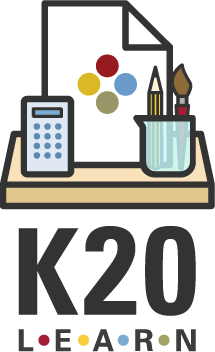Summary
In this lesson, students will explore how social groups, like generations, are defined by different characteristics and stereotypes. In groups, students will jigsaw readings to investigate these characteristics and stereotypes. Students will then create a mood board that represents one of the generations and reflect on their learning by comparing and contrasting different generational groups.
Essential Question(s)
How do stereotypes influence our perceptions of different groups?
Snapshot
Engage
Students take an introductory “Generations” survey to categorize generational characteristics by reflecting on their own generational identity.
Explore
Students sort images and discuss the reasoning behind their choices in a generational Card Sort activity.
Explain
In Jigsaw groups, students summarize stereotypes and traits of one generation from a reading, then join expert groups to teach each other.
Extend
Based on their learning, students create mood boards and conduct a Gallery Walk to clear up any misconceptions of a generation.
Evaluate
Students compare the values of at least two generational groups and justify their reasoning with evidence.
Materials
Generations Quiz (attached; one copy per student)
Generations Quiz Key (attached; for teacher use)
Card Sort Cards (attached; one set per partner group)
Jigsaw Reading Packet (attached; one half-page per student)
Note Catcher (attached; one per student)
Sticky notes
Paper
Pencils/Pens
Construction Paper (optional)
Color pencils/markers (optional)
Scissors (optional)
Preparing the Lesson
Explore-Card Sort
Prior to the lesson, print copies and cut out the attached Card Sort Cards handout. Citations starting on pages 7-10 do not need to be printed. It is recommended that you print the cards on heavy paper or card stock for durability. The Card Sort Cards handout includes headings that provide the answers. Avoid showing this to students. Mix the cards and place each set of cards in a small plastic bag.
Engage
10 Minute(s)
Introduce the lesson using slide 1 of the attached Lesson Slides. Display slide 2, pass out the attached Generations Quiz, and ask the students, “Which generation do you belong to?” Make sure to provide them with plenty of time to complete the quiz. Let students know that they may not feel like one of the answers applies exactly to them, but reinforce that they should respond with the answer that best represents them.
Display slide 3 and have the students score their own quizzes by adding up the total number of each response type. Think back to the quizzes in teen magazines.
Move to slide 4 and share the five generations:
Silent Generation
Baby Boomers
Gen X
Millennials
Gen Z
Share slides 5-9 to reveal the results from their quizzes.
Display slide 10 to share the Essential Question.
Display slide 11 to go over the lesson's Learning Objectives.
Explore
15 Minute(s)
Display slide 12 and take time to discuss what a stereotype is and common stereotypes in high school that students can relate to. Transition to slide 13 and introduce the Card Sort strategy. Ask students to find a partner, or turn to their elbow partner, and then provide each pair a set of Card Sort Cards. Explain to students that the deck includes each generation's name and images that could be associated with each period. Instruct students to look through the images and sort them based on what images they think are associated with each generation.
Provide time for pairs to complete the card sort and then compare their responses with another pair and discuss the similarities and differences.
Go through the cards as a class and ask for volunteers to share their reasons for sorting them as they did. Discuss which cards were challenging to categorize and why.
Explain
30 Minute(s)
Pass out the attached Jigsaw Readings Packet to each group and a Note Catcher to each student.
Display slide 14 and introduce students to the Jigsaw strategy. Create expert groups by dividing students into groups of 4-6 and distributing one half sheet to each student in a generation from the Jigsaw Readings Packet. In this initial group, students should all have the same reading. Students will use the Note Catcher to fill out characteristics and generate stereotypes as they read and discuss.
Move to slide 15. Place students into groups of 5 so that there is an expert on each generation within one group. Each expert now shares the characteristics and stereotypes of the generation they read about while their peers take notes on their Note Catcher.
Extend
60 Minute(s)
Transition to slide 16. Explain to students that they will independently create a mood board to visually represent the characteristics, values, and culture of a specific generation. The board should include images, colors, words, and symbols that capture the essence of that generation’s identity. Take time to review the checklist on the slide with students.
Students should use the generation they quizzed into in the Engage. If there isn’t an adequate distribution throughout the generations, ask for volunteers so that there are a few mood boards representing every generation.
Once students have created their projects, display them around the room. Move to slide 17. Distribute a sticky note to each student and introduce the Parking Lot strategy. Instruct students to Gallery Walk the boards around the room, and using their sticky notes, jot down any lingering questions they may have regarding a generation. After this, they should post the sticky notes in the “parking lot” or a designated spot for the notes. Before moving on, take time to discuss with the class any questions posed or clear up any misconceptions.
Evaluate
10 Minute(s)
Display slide 18 and tell students that they will be answering the following prompt in 7-9 sentences. Take time to break the prompt apart with students before they start. Students may use their Note Catcher to guide their work.
“Compare and contrast the stereotypes of two generational groups (e.g., Baby Boomers and Millennials) in terms of work ethic, tech adaptability, social values, and communication styles. Discuss how these stereotypes shape societal perceptions, whether they are accurate or misleading, and provide examples. Reflect on how this information influences your view of family, teachers, and colleagues.”
Resources
Baby boomer: American demographic group. (n.d.). Britannica. https://www.britannica.com/topic/baby-boomers
Dimock, Michael. (2019, January 17). Defining generations: Where millennials end and generation Z begins. Pew Research Center. https://www.pewresearch.org/short-reads/2019/01/17/where-millennials-end-and-generation-z-begins/
K20 Center. (n.d.). Card Sort. Strategies. https://learn.k20center.ou.edu/strategy/147
K20 Center. (n.d.). Elbow partners. Strategies. https://learn.k20center.ou.edu/strategy/116
K20 Center. (n.d.). Gallery walk/carousel. Strategies. https://learn.k20center.ou.edu/strategy/118
K20 Center. (n.d.). Jigsaw. Strategies. https://learn.k20center.ou.edu/strategy/179
K20 Center. (Sep. 21, 2021) K20 Center 5 minute timer [Video]. YouTube. https://www.youtube.com/watch?v=EVS_yYQoLJg
K20 Center. (n.d.). Parking lot. Strategies. https://learn.k20center.ou.edu/strategy/131
McKenna, A. (2025, April 11). Generation X. Britannica. https://www.britannica.com/topic/Generation-X
McKinsey and Company. (2024 August 28). What is Gen Z? https://www.mckinsey.com/featured-insights/mckinsey-explainers/what-is-gen-z
Millennial: demographic group. (n.d.). Britannica. https://www.britannica.com/topic/millennial
McKour, D. (2024, April 24). Baby boomers, millennials, gen Z: who names generations?. All About America: Voice of America. https://www.voanews.com/a/baby-boomers-millennials-gen-z-who-names-generations-/7581626.html
National Academies of Sciences, Engineering, and Medicine. (2020). Are Generational Categories Meaningful Distinctions for Workforce Management?. Washington, DC: The National Academies Press. https://doi.org/10.17226/25796.
Strauss, W., and Howe, N. (1991). Generations: The History of America’s Future 1584–2069.
Silent Generation
Armstrong, N. A. (1969). Buzz Aldrin and the U.S. Flag on the Moon [Photograph]. Wikimedia Commons. NASA. https://commons.wikimedia.org/wiki/File:Buzz_Aldrin_and_the_U.S._Flag_on_the_Moon_(9460188482).jpg
Margolies, J. (1981). Lakewood Drive-In Theater, Lakewood, California [Photograph]. Wikimedia Commons. Library of Congress. https://commons.wikimedia.org/wiki/File:Lakewood_Drive-In_Theater,_Lakewood,_California.jpg
Metro-Goldwyn-Mayer, Inc. (1957). Elvis Presley promoting Jailhouse Rock [Photograph]. Wikimedia Commons. https://commons.wikimedia.org/wiki/File:Elvis_Presley_promoting_Jailhouse_Rock.jpg
U.S. Federal Civil Defense Administration. (1958). Family fallout shelter [Photograph]. Wikimedia Commons. Digital Commonwealth, https://upload.wikimedia.org/wikipedia/commons/5/54/Family_fallout_shelter%2C_by_the_US_Federal_Civil_Defense_Administration%2C_January_1958%2C_from_the_Digital_Commonwealth_-_commonwealth_h128rv82b.jpg
U.S. National Archives. (1943, January 1). Women working on an airplane engine at North American Aviation, Inc. [Photograph]. Flickr. https://www.flickr.com/photos/usnationalarchives/11192161613
Unknown author. (1942, December 8). Auxiliaries Ruth Wade and Lucille Mayo further demonstrate their ability to service trucks [Photograph]. National Archives at College Park. https://commons.wikimedia.org/wiki/File:%22Auxiliaries_Ruth_Wade_and_Lucille_Mayo_(left_to_right)_further_demonstrate_their_ability_to_service_trucks_as_taught_th_-_NARA_-_531153.jpg
Baby Boomers
London Records. (1965). Rolling Stones ad [Advertisement]. Wikimedia Commons. https://commons.wikimedia.org/wiki/File:Stones_ad_1965.JPG
Scherman, R. (1963). Civil rights march on Washington, D.C. [Photograph]. Wikimedia Commons. National Archives at College Park, Public domain. https://commons.wikimedia.org/wiki/File:Civil_rights_march_on_washington_dc_schools.tif
Skolnick, A. (1969). Woodstock poster [Poster]. Wikimedia Commons. https://commons.wikimedia.org/wiki/File:Woodstock_poster.jpg
United States Army. (2007, February 7). Photograph of soldiers in action. https://commons.wikimedia.org/w/index.php?curid=1742068
Unknown Author. (n.d.). Cher - Casablanca [Photograph]. Wikimedia Commons. https://commons.wikimedia.org/wiki/File:Cher_-_Casablanca.jpg
Unknown Author. (n.d.). President John F. Kennedy and First Lady Jacqueline Kennedy [Photograph]. PICRYL. https://picryl.com/media/president-john-f-kennedy-jacqueline-kennedy-american-e22b5d?zoom=true
Gen X
Back to the Future. (2011). Back to the Future logo [Logo]. Wikimedia Commons. https://commons.wikimedia.org/wiki/File:Back-to-the-future-logo.svg
Demidov, A. (2021). Person wearing black and brown leather sandals [Photograph]. Pexels. https://www.pexels.com/photo/person-wearing-black-and-brown-leather-sandals-9495513/
Lipofsky, S. (1997). Michael Jordan [Photograph]. Wikimedia Commons. Basketballphoto.com, https://commons.wikimedia.org/wiki/File:Steve_Lipfosky_--_Michael_Jordan_(1997).jpg
Morris, S. (2000). Kate Moss on the cover of the May 2000 UK edition of Vogue magazine [Photograph]. Wikimedia Commons. https://commons.wikimedia.org/wiki/File:Vogue_SM.jpg
MTV Networks. (2016). MTV HD Logo [Logo]. Wikimedia Commons. https://commons.wikimedia.org/wiki/File:MTV_HD_Logo.svg
Unknown Author. (1989). West and East Germans at the Brandenburg Gate in 1989 [Photograph]. Wikimedia Commons. https://commons.wikimedia.org/wiki/File:West_and_East_Germans_at_the_Brandenburg_Gate_in_1989.jpg
Millenials
Argo, J. (1995). First responders in the aftermath of the bombing, April 19, 1995 [Photograph]. Oklahoma Publishing Company Photography Collection, Oklahoma Historical Society. https://www.okhistory.org/publications/enc/entry?entry=OK026
Compulsiveprep_8. (2009). If You Seek Amy [Photograph]. Wikimedia Commons. https://commons.wikimedia.org/wiki/File:If_you_seek_amy.jpg
realjames16. (2008). Barack Obama Fold [Photograph]. Wikimedia Commons. https://commons.wikimedia.org/wiki/File:Barack_Obama_Fold.jpg
Shankbone, D. (2010). Taylor Swift [Photograph]. Wikimedia Commons. https://commons.wikimedia.org/wiki/File:Taylor_Swift_by_David_Shankbone.jpg
Unknown Author. (n.d.). Early internet [Photograph]. Wikimedia Commons. https://commons.wikimedia.org/wiki/File:Early_internet_%28cropped%29.png
Unknown Author. (n.d.). K-pop boybands [Photograph]. Wikimedia Commons. https://commons.wikimedia.org/wiki/File:K-pop_boybands.jpg
Gen Z
Crommelinck, L. (2019, August 18). Billie Eilish @ Pukkelpop 2019 [Photograph]. Lars Crommelinck Photography. https://www.example.com
Editantpv. (2024). TikTok icon [Icon]. Wikimedia Commons. https://commons.wikimedia.org/wiki/File:Tiktok_icon.svg
natureaddict. (n.d.). Pokémon Go on phone [Photograph]. PICRYL. https://picryl.com/media/pokemon-pokemon-go-phone-computer-communication-93664e
New Zealand Defence Force. (2012). NZ Army soldier and NZLAV in Afghanistan [Photograph]. Wikimedia Commons. https://commons.wikimedia.org/wiki/File:NZ_Army_soldier_and_NZLAV_in_Afghanistan.jpg
Scholz, C. (2016). Hacker Symbol Photo - Hacking - IT - Security - magenta [Photograph]. Flickr. https://creativecommons.org/licenses/by/2.0, via Flickr. https://www.flickr.com/photos/140988606@N08/46569184374/
Skidmore, G. (2017). Finn Wolfhard [Photograph]. Wikimedia Commons. https://creativecommons.org/licenses/by-sa/4.0, via Wikimedia Commons. https://commons.wikimedia.org/wiki/File:Finn_Wolfhard_(35409222583).jpg


